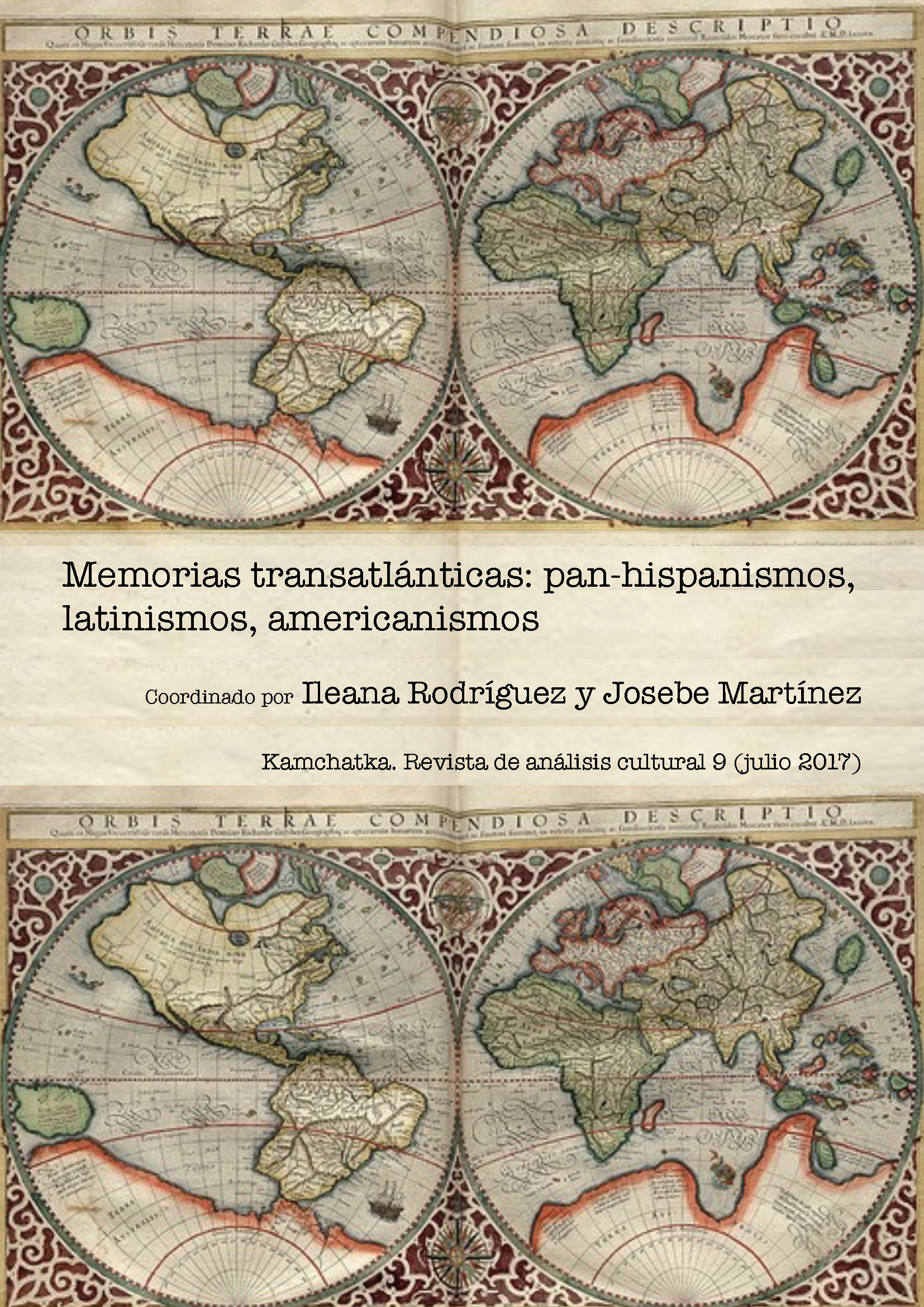Colonialismos, poscolonialismos y poderes hegemónicos en la frontera norte de México: arte, literatura y resistencia cultural / Colonialisms, postcolonialisms and hegemonic powers on the northern border of Mexico: art, literature and cultural resistance
DOI:
https://doi.org/10.7203/KAM.9.9566Keywords:
Cambio social, frontera, México, Tijuana, colonialismo, poscolonialismo. Abstract
Abstract
Resumen: Este artículo explora el desarrollo económico, demográfico y social de la frontera norte de México y el papel que ha jugado ésta en su historia colonial, en relación al surgimiento y desarrollo de su literatura. La obra del tijuanense Luis Humberto Crosthwaite ilustra cómo esta historia colonial es subvertida y transformada en parodia, mediante la cual, la frontera adquiere su propia hegemonía y soberanía.
Palabras clave: Cambio social, frontera, México, Tijuana, colonialismo, poscolonialismo.
Abstract: This article explores Mexico Northern border economic, demographic and social development, and the role this has played in its colonial history in relation to the emergence and development of its literature. Tijuana´s writer Luis Humberto Crosthwaite work captures how this colonial history is subverted and transformed into parody. In this way, the border becomes hegemonic and sovereign.
Key words: Social Change, Border, México, Tijuana, Colonialism, Postcolonialism.
 Downloads
Downloads
 References
References
Alegría Olazábal, Tito (1992). Desarrollo urbano en la frontera México-Estados Unidos. México, D.F.: Consejo Nacional para la Cultura y las Artes.
Arreola, Daniel D. y James R. Curtis (1993). The Mexican Border Cities: Landscape Anatomy and Place Personality. Tucson: University of Arizona Press.
Bataillon, Claude (1997). Espacios mexicanos contemporáneos. México, D.F.: El Colegio de México/Fondo de Cultura Económica.
Bayardo Gomez, Patricio (1990). El Signo y la Alambrada: Ensayos de Literatura y Frontera. Tijuana: Entrelineas Edition.
Clifford, James (1997). Routes: Travel and Translation in the Late Twentieth Century. Cambridge: Harvard University Press.
Cornejo Polar, Antonio (1997a). “Mestizaje, transculturación, heterogeneidad”- Kaliman, Ricardo J. (ed.) Memorias de JALLA Tucumán. Tucumán: Universidad Nacional de Tucumán: 267-270.
Cornejo Polar, Antonio. “Mestizaje e hibridez: el riego de las metáforas”. Revista Iberoamericana 63/180 (1997b): 341-44
Davis, Mike (2000). Magical Urbanism. Latinos Reinvent the U.S City. Londres: Verso.
De Certeau, Michael (1988). The Practice of Everyday Life. Berkeley: University of California Press.
Ganster, Paul y David E. Lorey (2008) The U.S. Mexican Border into the Twenty-First Century. Lanham: Rowman & Littlefield Publishing Group, Inc.
García Canclini, Néstor (1999). La globalización imaginada. Buenos Aires/México/Barcelona: Paidós.
Girven, Tim. “Hollywood´s Heterotopia: U.S. Cinema, the Mexican Border and the Making of Tijuana”. Travesía: Journal of Latin American Cultural Studies, 3: 1 & 2 (1994): 93-133.
Gutiérrez, Alfonso René (1995). Walls and Mirrors: Mexican-Americans, Mexican Immigrants, and the Politics of Ethnicity. Berkeley: University of California Press.
Lozano Ascencio, Fernando (1997). Sonorenses en Arizona: Proceso de formación de una nación binacional. Hermosillo: Unisón.
Martínez, Óscar J. (1982). Ciudad Juárez: El auge de una ciudad fronteriza a partir de 1848. México City: Fondo de Cultura Económica.
Mungaray, Alejandro. “Maquiladoras y organización industrial en la frontera norte de México”. Comercio exterior 48:4 (1998), 266-72.
Saldaña-Portillo, Josefina (2001). “Who´s the Indian in Aztlán? Re-Writing
Mestizaje, Indianism, and Chicanismo from the Lacandón”. Rodríguez, Ileana (ed.) The Latin American Subaltern Studies Reader. Durham: Duke University Press: 402-23.
Vilanova, Núria (2006). “Fronteras coloniales: mitos, ficción y parodia en el norte de México”. Usandizaga, Helena, (eda.). La palabra recuperada: mitos prehispánicos en la literatura latinoamericana. Madrid: Iberoamericana: 241-56.
Vilanova, Núria (2007). Border Texts: Writing Fiction from Northern Mexico. San Diego: San Diego University Press.
VVAA (1994). Visión histórica de la frontera norte de México. I-IV. 2ª ed. Mexicali: Universidad Autónoma de Baja California.
Williams, Raymond (1993). The Country and the City. Londres: Hogarth Press,
Zorrilla, Juan Fidel (1993). Tamaulipas: Una historia compartida 1810-1921. Ciudad Victoria: Universidad Autónoma de Tamaulipas.
Downloads
Published
How to Cite
-
Abstract1041
-
Artículo (Español)524
Issue
Section
License
This journal provides an immediate free access to the content on the principle that freely make investigation available to the public, which promotes an increased global knowledge exchange.
Unless otherwise indicated, texts published in this journal are under the license Attribution-NonComercial 4.0 by Creative Commons. These texts may be copied, distributed and publicly communicated whenever the publication’s author and title are quoted and whenever they are not used for commercial purposes. In any case, intellectual property of the articles and its potential economic rights entirely belong to its authors.
The full license can be consulted on https://creativecommons.org/licenses/by-nc/4.0/. We encourage authors to disseminate papers published in Kamchatka. Journal of cultural analysis electronically, in institutional digital repository or in their websites.





